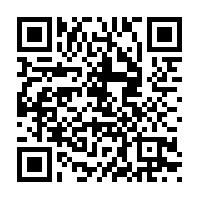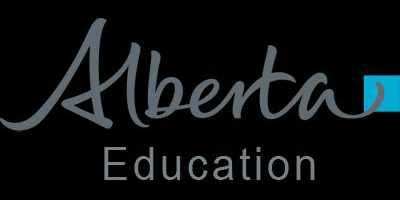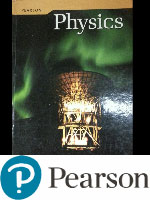PHYSICS 30
Unit 5: Momentum and Impulse
Unit Themes and Emphases
- Energy and Matter
- Nature of Science
- Scientific Inquiry
Focusing Questions:
- What characteristics of an object affect its momentum?
- How are momentum and impulse related?
- How does our understanding of concepts relating momentum and impulse influence the design of safety and sporting equipment?
Unit A: Momentum and Impulse
Themes: Change and SystemsOverview: In this unit, Newton’s second law of motion is linked to the concepts of momentum and impulse.
This unit builds on:
- Physics 20, Unit A: Kinematics; Unit B: Dynamics; and Unit C: Circular Motion, Work and Energy
Focusing Questions:
- What characteristics of an object affect its momentum?
- How are momentum and impulse related?
- How does our understanding of concepts relating momentum and impulse influence the design of safety and sporting equipment?
Students will:
A1. explain how momentum is conserved when objects interact in an isolated system.
Key Concepts: The following concepts are developed in this unit and may also be addressed in other units or in other courses. The intended level and scope of treatment is defined by the learning outcomes.- impulse
- momentum
- Newton’s laws of motion
- elastic collisions
- inelastic collisions
Students will:
30–A1.1k define momentum as a vector quantity equal to the product of the mass and the velocity of an object
30–A1.2k explain, quantitatively, the concepts of impulse and change in momentum, using Newton’s laws of motion
30–A1.3k explain, qualitatively, that momentum is conserved in an isolated system
30–A1.4k explain, quantitatively, that momentum is conserved in one- and two-dimensional interactions in an isolated system
30–A1.5k define, compare and contrast elastic and inelastic collisions, using quantitative examples, in terms of conservation of kinetic energy.
Specific Outcomes for Science, Technology and Society (STS) (Science and Technology Emphasis) Students will:
30–A1.1sts explain that technological problems often require multiple solutions that involve different designs, materials and processes and that have both intended and unintended consequences (ST3) [ICT F3–4.1]
- investigate the role of impulse and momentum in the design and function of rockets and thrust systems
- assess the roles that conservation laws, the concepts of impulse and inertia and Newton’s laws play in the design and use of injury-prevention devices in vehicles and sports
- describe the limitations of applying the results from studies of isolated systems in solving a practical problem, as occurred with the early design and deployment of airbags.
Specific Outcomes for Skills (Science and Technology Emphasis)
Initiating and Planning
Students will:
30–A1.1s formulate questions about observed relationships and plan investigations of questions, ideas, problems and issues
- design an experiment and identify and control major variables; e.g., demonstrate the conservation of linear momentum or illustrate the relationship between impulse and change in momentum (IP–NS2).
Students will:
30–A1.2s conduct investigations into relationships among observable variables and use a broad range of tools and techniques to gather and record data and information
- perform an experiment to demonstrate the conservation of linear momentum, using available technologies; e.g., air track, air table, motion sensors, strobe lights and photography (PR–NS2, PR–NS3) [ICT C6–4.4]
- collect information from various print and electronic sources to explain the use of momentum and impulse concepts; e.g., rocketry and thrust systems or the interaction between a golf club head and the ball (PR–ST1, PR–ST2) [ICT C1–4.1].
Students will:
30–A1.3s analyze data and apply mathematical and conceptual models to develop and assess possible solutions
- analyze graphs that illustrate the relationship between force and time during a collision (AI–NS2) [ICT C7–4.2]
- analyze, quantitatively, one- and two-dimensional interactions, using given data or by manipulating objects or computer simulations (AI–NS3) [ICT C6–4.2, C7–4.2].
Students will:
30–A1.4s work collaboratively in addressing problems and apply the skills and conventions of science in communicating information and ideas and in assessing results
- use appropriate Système international (SI) units, fundamental and derived units and significant digits (CT–NS2) ♣
- use appropriate numeric, symbolic, graphical and linguistic modes of representation to communicate ideas, plans and results (CT–ST2) ♣
- use the delta notation correctly when describing changes in quantities (CT–NS2) ♣.
- ♣ To be developed throughout the course.
Links to Mathematics
The following mathematics outcomes are related to the content of Unit A but are not considered prerequisites.
| Concept | Mathematics Course, Strand and Specific Outcome |
|---|---|
| Data Collection and Analysis | Grade 9 Mathematics, Statistics and Probability (Data Analysis), Specific Outcome 3 |
| Measurement and Unit Conversions | Mathematics 10C, Measurement, Specific Outcomes 1 and 2; Mathematics 10-3, Measurement, Specific Outcome 1; Mathematics 20-3, Algebra, Specific Outcome 3 |
| Trigonometry | Mathematics 10C, Measurement, Specific Outcome 4; Mathematics 10-3, Geometry, Specific Outcomes 2 and 4 |
| Rate and Proportions | Mathematics 20-2, Measurement, Specific Outcome 1 |
| Graph Analysis | Mathematics10C, Relations and Functions, Specific Outcomes 1, 4 and 7; Mathematics 20-3, Statistics, Specific Outcome 1 |
| Solving Equations | Grade 9 Mathematics, Number, Specific Outcome 6 |
| Scale Diagrams | Mathematics 20-2, Measurement, Specific Outcome 2; Mathematics 20-3, Geometry, Specific Outcome 2 |
| Slope | Mathematics10C, Relations and Functions, Specific Outcomes 3 and 5; Mathematics 20-3, Algebra, Specific Outcome 2 |
| Area Calculations | Mathematics 10-3, Measurement, Specific Outcome 4 |
| Powers | Mathematics10C, Algebra and Number, Specific Outcome 3 |
Chapter 9: The momentum of an isolated system of interacting objects is conserved.
Key Concepts
In this chapter, you will learn about:- impulse
- momentum
- Newton’s laws of motion
- elastic and inelastic collisions
Knowledge
- define momentum as a vector quantity
- explain impulse and momentum using Newton’s laws of motion
- explain that momentum is conserved in an isolated system
- explain that momentum is conserved in one- and two-dimensional interactions
- compare and contrast elastic and inelastic collisions
Science, Technology, and Society
- explain that technological problems lend themselves to multiple solutions
Flippity Review Questions for Chapter 9

9.1 Momentum is Mass Times Velocity
Momentum - the product of the mass of the object and its velocity.| p = mΔv |
→
|
→
|
9.2 Impulse Is Equivalent to a Change in Momentum
| Fnet = | Δp |
→
→
|
| Δt |
| FΔt= mΔv |
→
|
→
|
DIAGRAM - Force vs Time Graph
9.3 Collisions in One Dimension
Law of conservation of momentumWhen no external net force acts on a system, the momentum of the system remains constant.
| Σpbefore = Σpafter | → → |
Elastic collision – a collision where kinetic energy is conserved.
Inelastic collision – a collision where kinetic energy is lost as heating due to the work done by friction, elastic energy deforming objects and sound energy.
9.4 Collisions in Two Dimensions
In two-dimensional collisions where no external net force acts on the system, the momentum of the system in both the x and y directions remain constant.ΣpXbefore = ΣpXafter
ΣpYbefore = ΣpYafter

